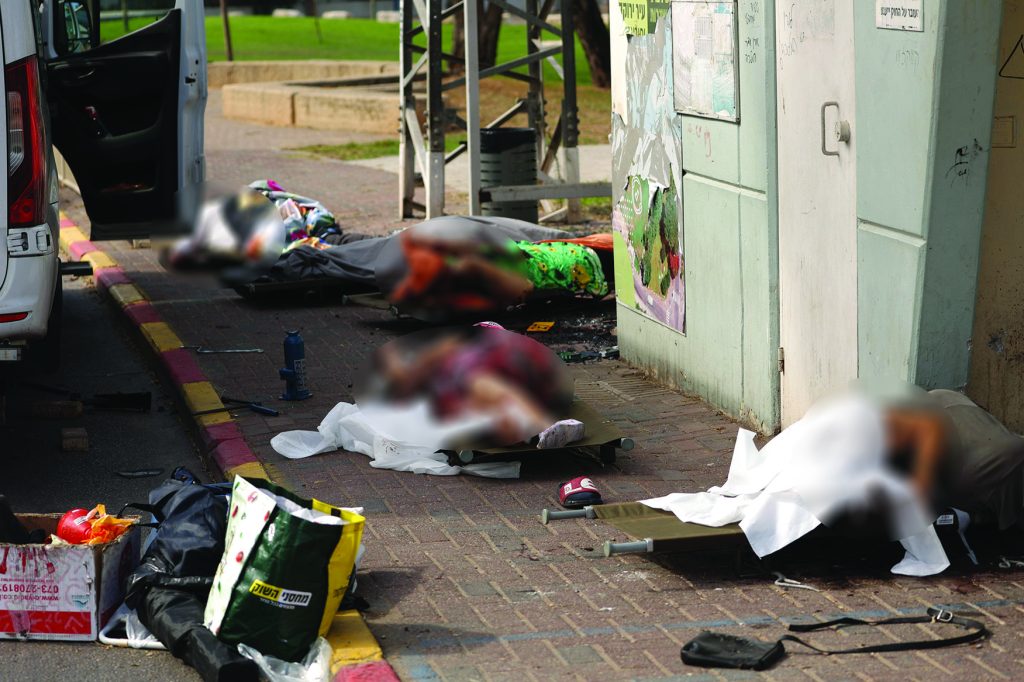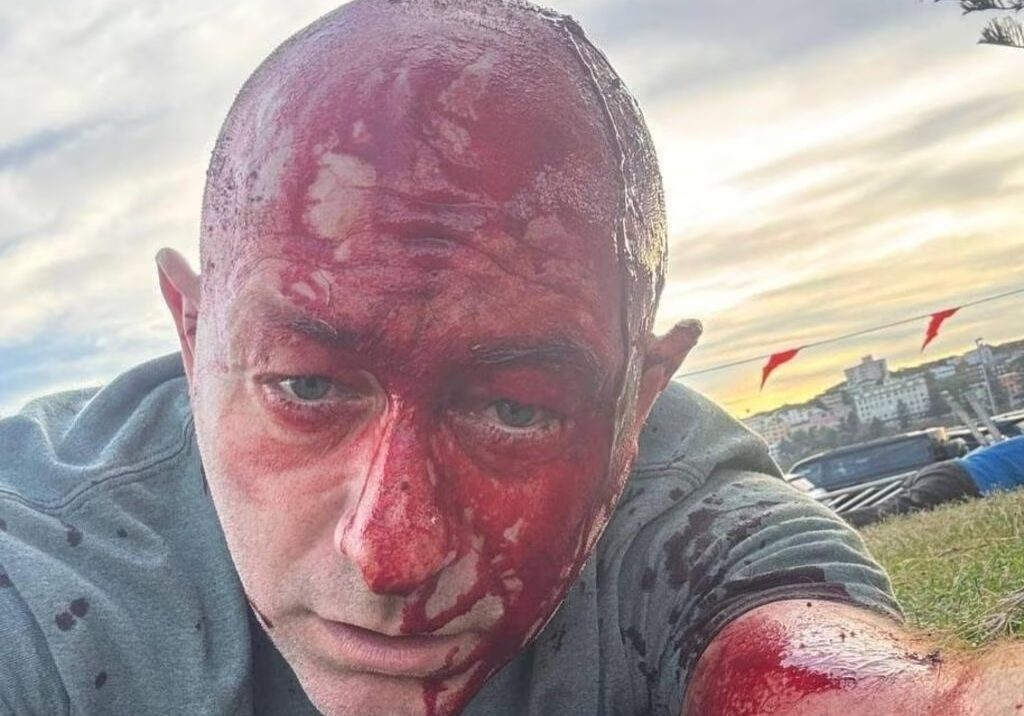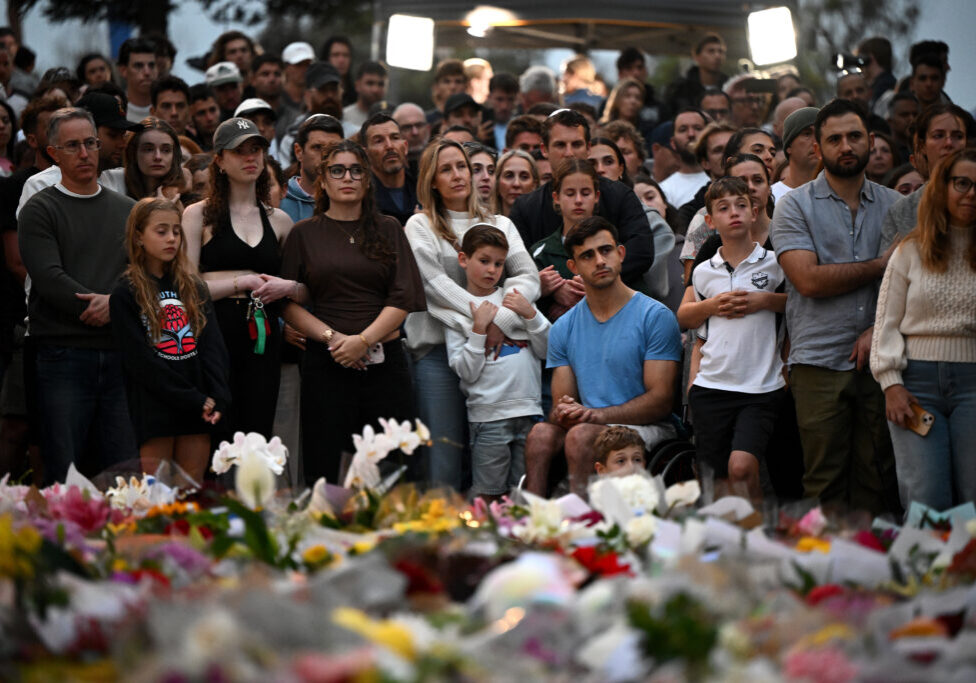Australia/Israel Review
“Too much to bear”: Identifying the remains
Nov 2, 2023 | Aaron Poris

Stifling the urge to retch became a difficult task as I walked through the lower levels of Israel’s National Centre of Forensic Medicine (Abu Kabir) in Tel Aviv. The smell of rotting human remains, much of which was completely unrecognisable as human due to the brutality of the attack, was at times too much to bear.
In light of the growing international interest in (and denials of) the Palestinian terror group Hamas’ October 7 massacre in southern Israel, representatives of the global press were invited to see the horrors for themselves.
Forensic pathologists, including Israeli staffers as well as volunteers from abroad, were visibly disturbed by the evidence before them. Despite every effort to remain objective and detached – as called for by the profession – many broke down in tears throughout the day.
During the initial press conference, the forensics team showed images from their investigations. Among the images were those of charred hands with marks that revealed where the victims’ hands were bound behind their backs with metal wire before they were burned alive.
Perhaps the most disturbing image in the slideshow was a completely charred mass of flesh, which at first glance could not be seen as ever having belonged to a human. It was only after a CT scan was done that experts could see the inhumanity of the image.
Two spinal cords – one belonging to an adult, one to someone young – a parent and child bound together by metal wires in a final embrace before being set alight.
“When you do this job downstairs, you get detached,” Dr. Chen Kugel, the head of Abu Kabir, told The Media Line. “But then you learn the stories and connect to the people. It’s hard not to feel the tragedy. It’s so big. And when I go to the Shura camp [where deceased bodies in Israel are first collected] and see containers like you’d see at the port – but they’re all full of bodies… And you hear the stories – that behind their charred bodies, something terrible happened – it’s very difficult. I’ve seen many things in my 31-year career, but the magnitude and the cruelty [here] is terrible,” Kugel added.
“The proportion of bodies we’ve received who are charred is high,” Kugel explained. “Many have gunshot wounds in their hands, showing they put their hands up to their faces in defence. Many were burned alive in their homes… We know they were burned alive because there is soot in their trachea, their throats – meaning they were still breathing when set on fire.”
The single mercy, Kugel said – if there is one to be found – is that the burned victims likely died from carbon monoxide and soot inhalation before the fire killed them.
Kugel also explained that the age range of the victims spans from three months to 80 or 90 years old. Many bodies, including those of babies, are without heads.
Asked if they were decapitated, Kugel answered yes. Although he admits that, given the circumstances, it’s difficult to ascertain whether they were decapitated before or after death, as well as how they were beheaded, “whether cut off by knife or blown off by RPG,” he explained.
Kugel was far from the only one who got emotional when discussing the evident travesty. “We disassociate because we need to work, but from time to time it gets to you,” Dr. Nurit Bublil, head of Abu Kabir’s DNA laboratory, told The Media Line.
“Yesterday, I opened evidence from a house in a southern kibbutz, and there was a popular recipe book covered in blood… I have this same book, and it makes you take a moment and think, it could have been my kitchen, my children, my parents, me. You can’t avoid it,” she said.
Additionally, Israel’s small population gives rise to the fact that no one is far removed from the wake of the massacre. “My sister has a close friend of hers who is still missing,” said Bublil, as she stood beside a blood-stained mattress from a baby’s crib. The DNA from the mattress will be used to try to identify a brutally disfigured and unaccounted-for infant.
“I got the message today from my neighbour,” Bublil continued. “She asked if I could help because her good friend’s husband, father, two nephews, and father-in-law’s wife were all murdered too and have yet to be identified.”
This is the crux of the forensic pathology centre’s current mission in which roughly 200 experts are participating. Forensic pathologists, anthropologists, radiologists, and more from Israel as well as from the US, Switzerland, New Zealand, and elsewhere around the world have come not simply to determine the victims’ causes of death but to identify the bodies for burial.
Fighting back tears, Israeli forensic pathologist Dr. Hagar Mizrahi explained that “as you know, the Jewish people must bury their dead as soon as possible.”
But as of this writing, nearly two weeks have passed since the massacre, and some 350 bodies remain unidentified. “So, the people here at Abu Kabir are doing their best to help and identify the most severe cases that arrive.”
950 body bags
Four places around the country are currently working to identify and release bodies for burial.
The Israel Police headquarters in Jerusalem is handling all the antemortem samples and personal items for DNA comparisons. The Israel Defence Forces is working on one-one DNA comparisons using their data on soldiers, including fingerprints, dental records, and DNA. In addition, Abu Kabir is working to collect DNA samples and identification for the most severe cases. It’s also where all the DNA samples from other locations come for additional testing. And the Shura camp near Ramla in central Israel is where all the deceased are initially collected. Shura currently has some 950 body bags in its possession.
The word “bags” is written here instead of “bodies” because it’s not clear how many victims there are within them.
“More than one person’s remains may be in a single bag,” Kugel explained, “and one person’s remains may be in multiple bags.” When looking at remains, he added, “We know there are multiple people because we see double. For example, if you see two bones from the left maxilla, then it couldn’t be from the same person.”
And in many cases, bones without so much as a speck of extractable DNA are all that’s left. For that reason, Kugel said that some victims’ families would be right to fear the worst.
“We hope that with CT and biopsies, we can bring the unidentified down to less than 200. But some people, we will never find. We will never identify them. And people need to be prepared for this.”
Speaking personally, Bublil said that she wants the world to know that “generally, Hamas enjoyed the killing.”
According to Bublil, “This was not combat, or a military conflict, or a state conflict, or a political conflict. [Hamas] enjoyed the murders so much that they did everything they could do to celebrate the killing. They celebrated burning houses with civilians inside who didn’t do anything to them. They enjoyed grabbing an 18-year-old girl from a party, a festival, dragging her to a car, and taking her to Gaza. And who knows what happened [to her] in between. They enjoyed and celebrated the death. … These are monsters. They’re not human.”






